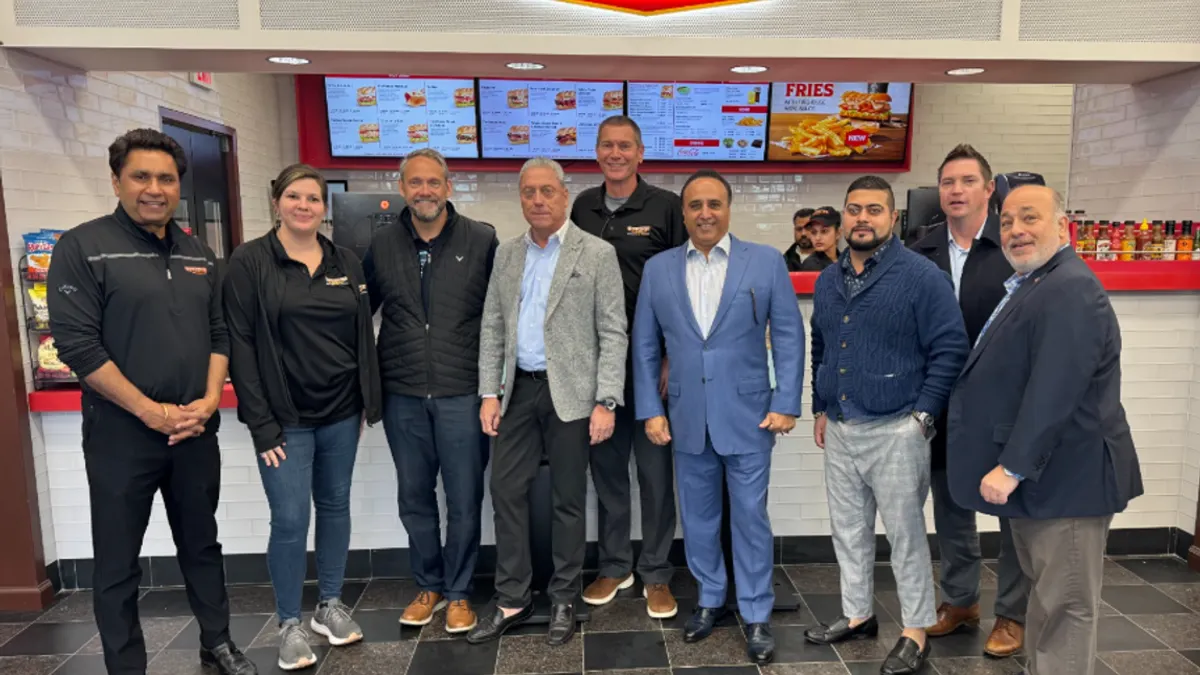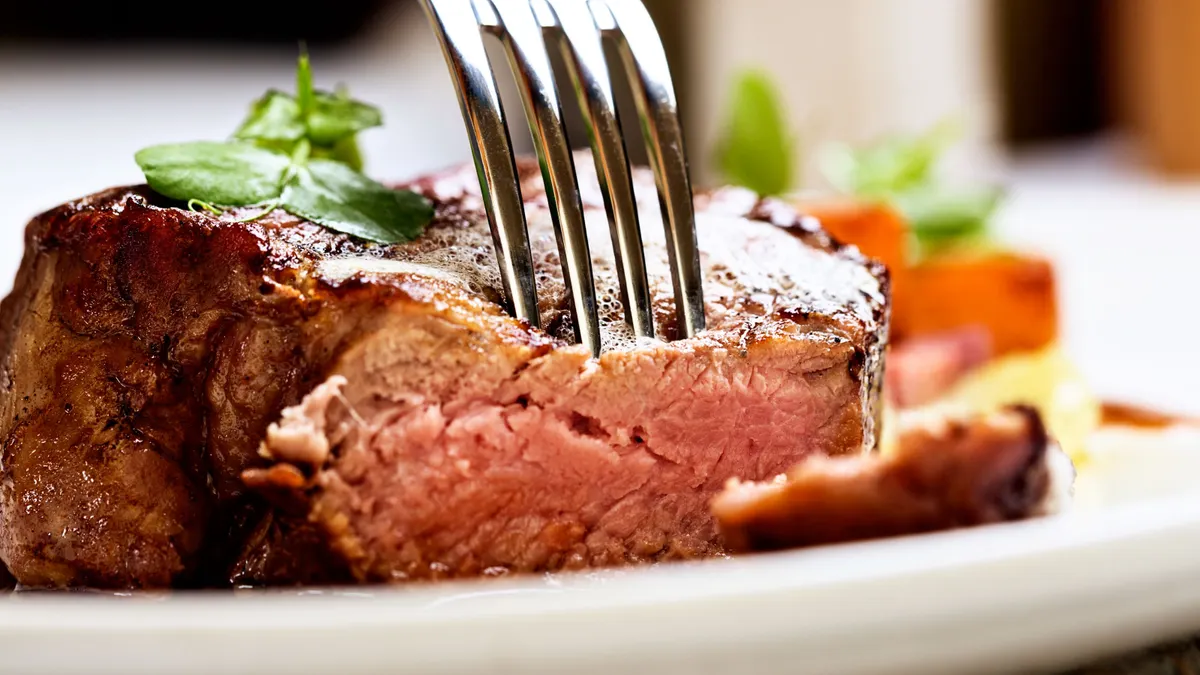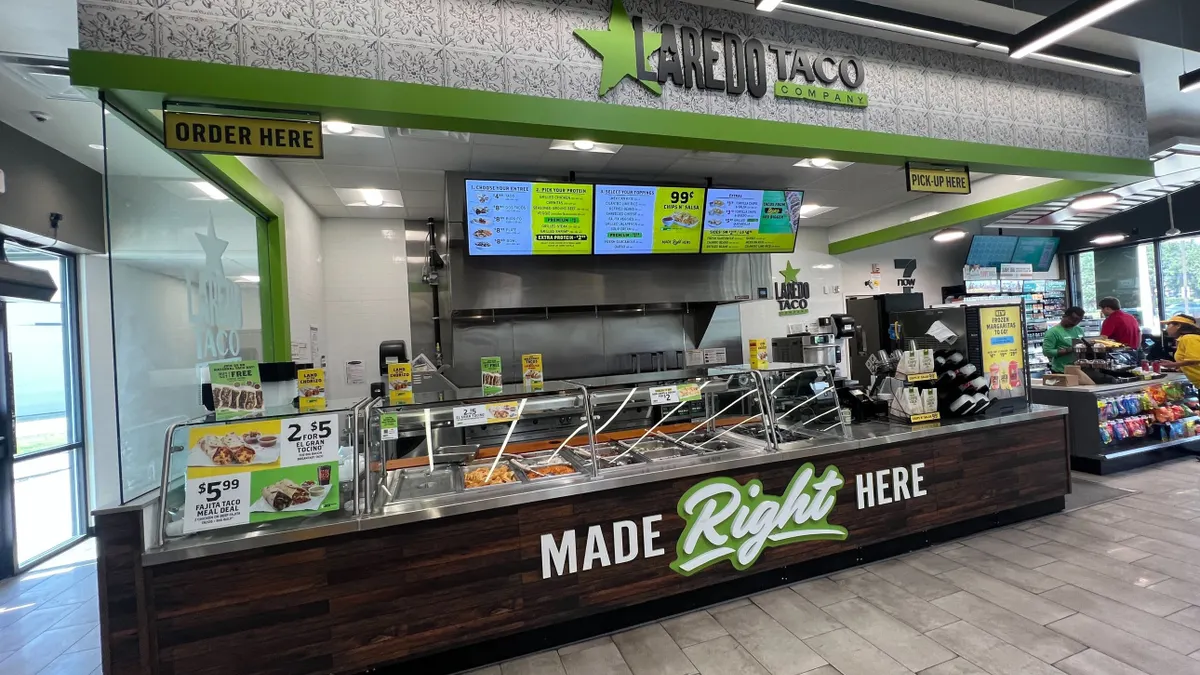Editor’s note: This is the latest article in a series that spotlights chains with less than 50 units and the strategies, challenges and lessons learned that have shaped their growth journey. You can read the first in the series about MUTTS Canine Cantina here.
When Pinstripes founder and CEO Dale Schwartz opened his first location in May 2007, it was the culmination of a 20-year dream. After decades working in the biopharma space and co-founding a pharmacy, he wanted to create a place where people could spend quality time together.
But the early years at Pinstripes weren’t the easiest.
After securing an $8 million bank loan, interviewing 38 general managers, 36 executive chefs and 35 event sales team members, the bowling concept set up shop in the North Shore of Chicago. The 38,000-square-foot flagship, which served Italian-American food, had two levels and 20,000 square feet of outdoor space with 18 bowling lanes, 12 bocce courts, a banquet space, wine cellar, bistro and bar, he said.
Customers enjoyed the first location so much, Schwartz committed to another restaurant in late 2007. On Sept. 22, 2008, the second Pinstripes opened the Chicago suburb of South Barrington, Illinois, just one day after Lehman Brothers declared bankruptcy and a few months before the Dow Jones bottomed out in May 2009.
“Never in the last 50 to 60 years in discussions with all kinds of restaurateurs has there been anything like it,” Schwartz said.
Chains across the country struggled with same-store sales as people cut back on dining. Coffee powerhouse Starbucks closed 600 stores, while chains like Bennigan’s and Fuddruckers filed for bankruptcy. Schwartz and Pinstripes, however, kept going.
“We had to work harder on service, on marketing strategy to drive sales, on event sales strategies to drive even more event business,” he said. “That which doesn’t kill you makes you stronger, and I suspect it made us stronger.”
By focusing on these areas, alongside a careful growth strategy and experienced board of directors, which included the founder of Maggiano’s and a former chairman and CEO from McDonald’s, helped the company survive and open a third Pinstripes in November 2010.
Now that Pinstripes’ network exceeds a dozen locations across the country — it opened its 13th location in Norwalk, Connecticut, at the end of 2019 — the company is working on a different strategy: partnering with real estate developers.
Building partnerships to help with growth
As malls struggling with the rise of e-commerce and the Amazon effect, retail developers and landlords have shifted toward experiential concepts, which has created an opening for Pinstripes to expand. Real estate developers approached Pinstripes, and companies started to make equity investments in Pinstripes, Schwartz said. Over the last 15 months, the restaurant raised $25 million in minority equity from real estate groups, including Hudson’s Bay, Brookfield Properties and Simon Property Group. And other partnerships are in discussions.
“The unique attraction of some of these partnerships with developers is not just the capital provided, but also quality locations in many of these projects,” Schwartz said. “That is the real magic sauce and attraction for both sides.”
These collaborations, however, also mean Pinstripes’ expansion rate can be tied to a development’s overall timeline. The company will likely open two to three locations in 2020, with five to seven on the docket for 2021.
“[This year] is two or three and not four not because we can’t digest and open four, but some sites that otherwise were slotted in [2020] were pushed into 2021,” he said. “There are a lot of moving parts. These are big venues with a lot of team members. We certainly never want to feel like we’re doing this in an indiscriminate cookie cutter approach.”
The restaurant’s sweet spot is 27,000 square feet of interior space and a patio, but the layout can be done in several different ways. Some might have 19,000 square feet on the first floor and 8,000 square feet on a second. Others could be two stacked 14,000 square feet levels, he said.
When Pinstripes considers working with a developer, it looks at the existing or planned co-tenants. If it is the only quality tenant in a development, that is an indicator that partnering with that project would be a mistake, Schwartz said.
One of its newest locations at the Hillsdale Shopping Center in San Mateo, California, for example, has a movie theater, West Elm and Lululemon, Schwartz said. The Pinstripes there is next to an Apple store as well. These types of tenants can drive shopper traffic who may decide afterwards to go bowling or play bocce ball. Pinstripes is also aiming to be in large mixed-use developments with residential or hotel components, he said.
“Our bandwidth is a little limited and those developers that really… want to entice us to make sure we’re part of their projects are sometimes the ones that will get our attention,” he said.
While the company can manage several openings at once, proving this by opening three locations in 45 days at the end of 2019, that’s not its typical strategy. Instead it has found greater success waiting for the right collaborations, which make it easier to raise capital. Without them, the company would have to look for private equity money elsewhere. That could mean an IPO, which it has explored on occasion.
Slow and steady
As Pinstripes pushes toward its goal of 100-plus units in the U.S. and 100 around the world over the next 20-plus years, it will open several locations each year, but Schwartz doubts the company will ever do any more than eight or 10 in a year. Four to six or even seven? Probably, he said.
“When you scale, it clearly becomes easier to scale at a faster pace. We have more infrastructure. We’ve got more team members. So it’s easier to do so,” he said.
But the pace won’t look anything like QSRs that need grow to make year-over-year increases in sales. Pinstripes aims for $10 million in sales at each location compared to the average $1 million to $2 million in average unit volumes at QSRs, Schwartz said. That means, it only needs to open four or five locations to increase sales opportunity to $50 million, he said.
By reaping this much in AUVs, it also doesn’t need to ever switch to an asset-light model and will keep its U.S. stores company-owned. As it expands internationally, Pinstripes will need to find partners in different markets and has already been in discussions with partners in various countries, including Australia, he said. The company has also considered the Middle East, Europe and Latin America, he said. Chile and Prague could offer some potential, especially since they are seeing the same experiential retail trends brought on by the Amazon effect, he said, adding that it’s just lagging three to five years in other countries.
“If we’re able to access the right capital to be able to grow then that is one reason we won’t and haven’t franchised,” Schwartz said.

















